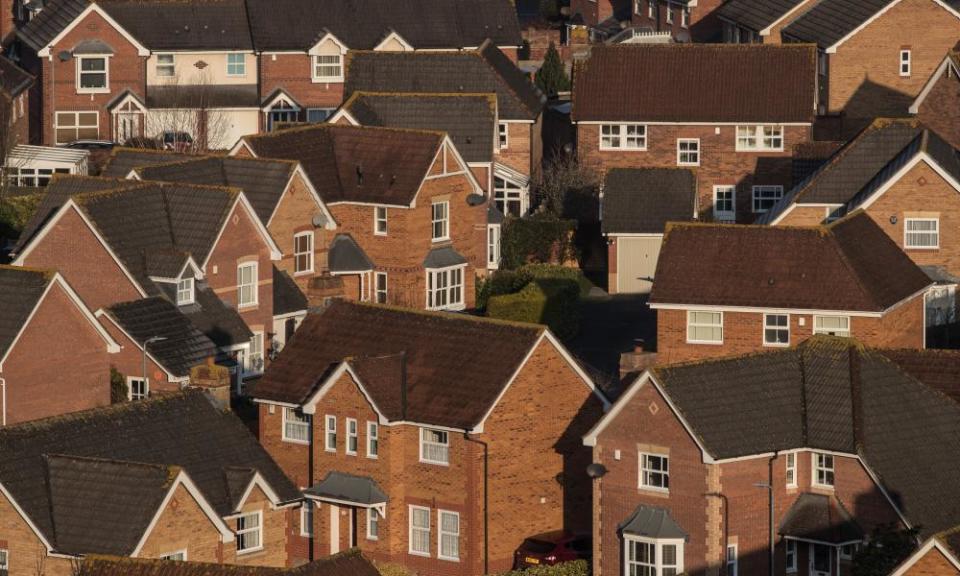Buy-to-let has skewed housing market and must be curbed, says thinktank

Private landlords have put home ownership beyond the reach of at least 2 million families, research shows, while Britain has built only half as many new homes as France over the same period.
The radical report from the new Conservative thinktank Onward recommends ending or severely curtailing tax breaks for buy-to-let and private landlords, a stronger role for local councils and major reform of the planning system to allow communities rather than developers to lead the process.
The report, which was written by Neil O’Brien, a former aide to George Osborne who also worked for Theresa May at No 10, calls for government intervention in the housing market, including giving London councils the power to limit foreign ownership.
“We need to change the balance between the rented sector and home ownership,” O’Brien said. “We should protect existing landlords but discourage more people from investing in rental property, because the buy-to-let boom has bid up prices and reduced homeownership among younger people.”
Previous governments have already acted to curb tax relief on mortgage repayments and maintenance for landlords, but the thinktank says it is still a privileged form of investment that reduces the number of homes available for owner-occupiers while reducing the amount of capital available for more productive investment.
“The UK is one of the cheapest countries for investors involved in residential rental investments,” the report finds.
Emphasising the link between shortage of supply and rising home prices, the report offers radical ideas for increasing the number of new homes.
It argues that planning permission for a hectare of agricultural land can add as much as £2.5m to its value. If the community could benefit from some of the increase, the report argues, it could be used to pay for the kind of services and infrastructure that new developments sometimes lack.
Instead of piecemeal development, it recommends that councils should have the power to put together land and create new settlements with services. It looks across Europe, where most local authorities have strong powers to initiate and shape development and link it to public transport.
It proposes better support to help councils plan new developments drawing on expertise from across the sector, as well as abroad. It also recommends much higher density urban occupation, where the UK lags behind most other comparable countries.
What are leasehold houses?
Britain has had leasehold homes for hundreds of years, but only in the past few months has the ground rent scandal exploded. Now the government is proposing a complete ban on new houses sold as leasehold, and reducing ground rents to zero. Traditionally, houses have been sold as freehold, and the buyer has complete control over their property. When a house is sold as leasehold, the buyer is effectively only a tenant with a very long term rental, with the ground the home is built on remaining in the hands of the freeholder. The home buyer has to pay an annual “ground rent” to the freeholder, and has to ask the freeholder for consent if they want to make any changes to the property, such as building a conservatory or changing the windows.
Why have they suddenly become such a problem?
In the past, leasehold property owners were generally charged just a “peppercorn” ground rent, sometimes as little as £1 a year, and many freeholders did not bother to collect it. But the picture changed earlier this century, when developers started to insert clauses into leasehold contracts where the ground rent was set at £200-£400 a year, doubling every ten years. Direct Line estimates the typical ground rent to be currently £371. Although unsuspecting first-time buyers were frequently told that 999-year leases were “virtually freehold”, the clauses meant that the ground rent would soon spiral to absurd levels. The government quotes a family house where the ground rent is expected to hit £10,000 a year by 2060.
How many people are affected?
The Leasehold Knowledge Partnership, which has vigorously campaigned on this issue, estimates that around 100,000 homebuyers are trapped in contracts with spiralling ground rents. There are many more people in leasehold flats, some of which also have doubling ground rents.
Is it just the ground rent that is the issue?
No. Freeholders are able to extract other sums out of their leaseholders in a variety of ways. Homebuyers report being charged £100 even to have a letter answered by the freeholder, and as much as £2,500 for permission to build a conservatory. These are charges that are on top of obtaining planning permission.
The report wants councils to be able to borrow to buy development land that hey could sell on with planning permission, allowing the local community to benefit from the increased value.
Will Tanner, a former Downing Street policy adviser who is now director of Onward, said it was possible to tackle the housing crisis without concreting over the green belt.
“If the government wants to regain the support of young people ... it must be unflinching in its pursuit of greater home ownership. That means hard choices like ending tax breaks for new landlords and giving councils much stronger powers.”

 Yahoo News
Yahoo News 